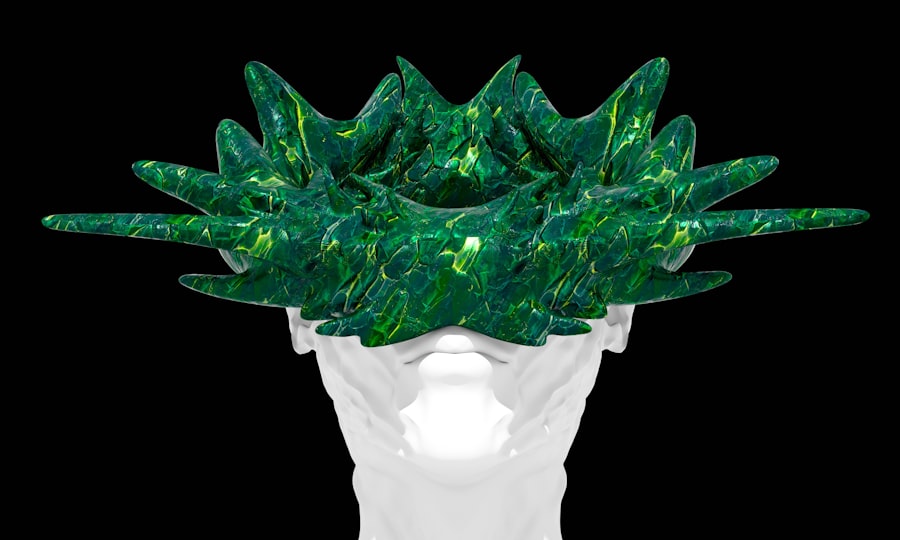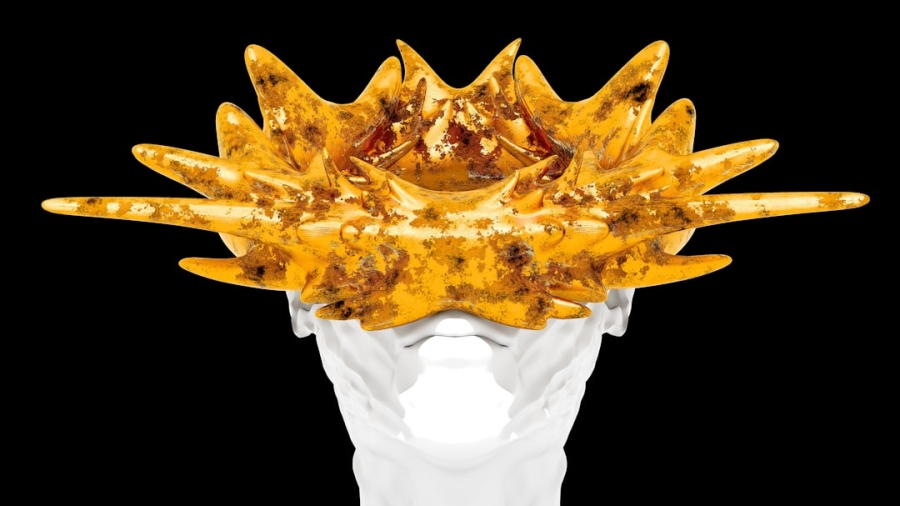The intersection of technology and art has long been a fertile ground for innovation, and one of the most transformative developments in recent years is the advent of blockchain technology. Initially conceived as the backbone of cryptocurrencies like Bitcoin, blockchain has evolved into a versatile tool with applications across various sectors, including art authentication. The art world has historically grappled with issues of provenance, forgery, and ownership disputes, which can undermine the value and integrity of artworks.
Blockchain offers a promising solution by providing a decentralized, immutable ledger that can securely record the history of an artwork from its creation to its current ownership. This technology not only enhances transparency but also fosters trust among artists, collectors, and galleries, thereby revolutionizing how art is bought, sold, and authenticated. As the art market continues to expand globally, the need for reliable authentication methods has become increasingly critical.
Traditional methods of verifying an artwork’s authenticity often rely on expert opinions, certificates of authenticity, and provenance records, which can be susceptible to human error or manipulation. Blockchain technology introduces a new paradigm by enabling artists to create a digital certificate that is permanently linked to their work. This certificate contains essential information such as the artist’s identity, the date of creation, and transaction history, all of which are securely stored on the blockchain.
By leveraging this technology, stakeholders in the art world can access a verifiable and tamper-proof record that significantly reduces the risk of fraud and enhances the overall credibility of the art market.
Key Takeaways
- Blockchain technology provides a secure and transparent way to authenticate art, ensuring the integrity of the art market.
- The decentralized nature of blockchain allows for the creation of a tamper-proof digital ledger that records the provenance and ownership history of art pieces.
- Advantages of using blockchain for art authentication include increased transparency, reduced fraud, and improved trust among art market participants.
- Challenges and limitations of blockchain in art authentication include the need for widespread adoption, potential privacy concerns, and the risk of technological obsolescence.
- Case studies demonstrate successful implementation of blockchain in art authentication, such as the use of non-fungible tokens (NFTs) to verify digital art ownership and provenance.
How Blockchain Technology Works in Art Authentication
Understanding Blockchain Technology
At its core, blockchain technology operates as a distributed ledger system that records transactions across multiple computers in a way that ensures security and transparency. Each transaction is grouped into a block, which is then added to a chain of previous blocks, creating a chronological record that is nearly impossible to alter without consensus from the network participants.
Blockchain in Art Authentication
In the context of art authentication, this means that every time an artwork changes hands—whether through sale, donation, or exhibition—its transaction details can be recorded on the blockchain. This creates a comprehensive history that can be accessed by anyone with permission, allowing for real-time verification of an artwork’s provenance.
The Process of Creating a Blockchain Record
The process begins when an artist creates a digital representation of their artwork, often in the form of a non-fungible token (NFT). This NFT serves as a unique identifier for the piece and is linked to the blockchain. The artist can then input relevant information about the artwork into the blockchain, including its title, medium, dimensions, and any other pertinent details. Once this information is recorded, it becomes part of the immutable ledger. As the artwork is sold or transferred, each transaction is logged on the blockchain, creating a transparent trail that can be followed back to the original creator.
Benefits of Blockchain in Art Authentication
This not only helps in establishing authenticity but also provides potential buyers with confidence in their investment.
Advantages of Using Blockchain for Art Authentication

One of the most significant advantages of utilizing blockchain technology for art authentication is its ability to enhance transparency within the art market. By providing a public ledger that records every transaction related to an artwork, blockchain allows potential buyers and collectors to trace an artwork’s history with ease. This level of transparency can help mitigate concerns about forgery or misrepresentation, as buyers can verify the authenticity and provenance of a piece before making a purchase.
Furthermore, this transparency extends beyond individual transactions; it can also foster greater trust between artists and collectors by ensuring that artists receive proper credit and compensation for their work. Another key benefit of blockchain in art authentication is its potential to streamline processes that have traditionally been cumbersome and time-consuming. The art market has long been plagued by inefficiencies related to documentation and verification.
With blockchain technology, much of this paperwork can be digitized and automated, reducing the administrative burden on artists and galleries alike. Smart contracts—self-executing contracts with terms directly written into code—can facilitate transactions without the need for intermediaries such as auction houses or galleries. This not only speeds up the buying and selling process but also reduces transaction costs, making art more accessible to a broader audience.
Challenges and Limitations of Blockchain in Art Authentication
Despite its many advantages, the implementation of blockchain technology in art authentication is not without challenges. One significant hurdle is the issue of digital literacy among artists and collectors. While younger generations may be more comfortable navigating digital platforms and understanding cryptocurrencies, many established artists and traditional collectors may find blockchain technology daunting or confusing.
This knowledge gap can hinder widespread adoption and limit the effectiveness of blockchain as a tool for authentication in the art world. Additionally, there is often skepticism surrounding new technologies; some stakeholders may question whether blockchain can truly deliver on its promises or if it is merely a passing trend. Another challenge lies in the regulatory landscape surrounding blockchain technology and digital assets.
As governments around the world grapple with how to classify and regulate cryptocurrencies and NFTs, there remains uncertainty regarding legal frameworks that govern these transactions. Issues such as intellectual property rights, copyright infringement, and taxation are still being debated in many jurisdictions. This lack of clarity can create apprehension among artists and collectors who may be hesitant to engage with blockchain-based systems due to fears about potential legal repercussions or complications.
Until there is greater regulatory certainty, widespread adoption may be stymied.
Case Studies: Successful Implementation of Blockchain in Art Authentication
Several pioneering initiatives have emerged that showcase the successful implementation of blockchain technology in art authentication. One notable example is Verisart, a platform that allows artists to create digital certificates for their artworks using blockchain technology. By providing artists with an easy-to-use interface for registering their works on the blockchain, Verisart has empowered creators to take control of their own provenance records.
The platform not only enhances transparency but also enables artists to establish their credibility in an increasingly competitive market. As more artists adopt this technology, it could lead to a significant shift in how authenticity is perceived within the art community. Another compelling case study is that of Myco, which focuses on integrating blockchain with traditional art markets.
Myco collaborates with galleries and auction houses to provide them with tools for verifying artworks through blockchain-based certificates. By partnering with established institutions in the art world, Myco aims to bridge the gap between traditional practices and modern technology. This approach not only enhances trust among buyers but also encourages galleries to adopt innovative solutions that streamline their operations while safeguarding against fraud.
Future Implications of Blockchain in Art Authentication

Increased Confidence and Demand
As more artists and collectors become familiar with blockchain systems, we may witness a paradigm shift in how artworks are valued and traded. The ability to verify authenticity through an immutable ledger could lead to increased confidence among buyers, potentially driving up demand for authenticated pieces.
The Rise of Digital Art and NFTs
Furthermore, as digital art continues to gain prominence—especially with the rise of NFTs—blockchain will likely play an even more critical role in establishing ownership rights and protecting creators’ interests.
Innovative Applications and Synergies
Advancements in technology could pave the way for even more innovative applications within the realm of art authentication. For instance, integrating artificial intelligence (AI) with blockchain could enhance verification processes by analyzing patterns in artwork styles or detecting anomalies indicative of forgery. Such synergies could create a more robust ecosystem for art authentication that combines human expertise with technological precision. As these technologies evolve together, they may redefine not only how we authenticate art but also how we engage with it on a broader scale.
Ethical and Legal Considerations in Blockchain Art Authentication
The integration of blockchain technology into art authentication raises several ethical and legal considerations that must be addressed as this field continues to develop. One pressing concern revolves around issues of privacy and data ownership. While blockchain offers transparency regarding ownership history, it also raises questions about who has access to this information and how it may be used.
Artists may wish to maintain some level of anonymity regarding their works or limit access to certain details about their creations. Striking a balance between transparency and privacy will be crucial as stakeholders navigate these complexities. Additionally, intellectual property rights present another layer of complexity within the realm of blockchain art authentication.
As digital assets become more prevalent through NFTs and other forms of tokenization, questions arise about how copyright laws apply in this new context. Artists must ensure that they retain control over their work while also navigating potential infringements that could occur within decentralized systems. Legal frameworks will need to evolve alongside technological advancements to protect creators’ rights effectively while fostering innovation within the art market.
The Role of Blockchain in Protecting Original Works
In conclusion, blockchain technology holds immense potential for transforming art authentication by providing a secure, transparent method for verifying authenticity and provenance. As artists increasingly embrace this innovative approach, they gain greater control over their work while fostering trust among collectors and galleries alike. While challenges remain—ranging from digital literacy gaps to regulatory uncertainties—the successful case studies emerging from this field demonstrate that meaningful progress is being made.
As we look toward the future, it is clear that blockchain will play an integral role in protecting original works from forgery and misrepresentation while enhancing overall market integrity. By addressing ethical considerations and adapting legal frameworks accordingly, stakeholders can harness the full potential of this technology to create a more equitable art market that values authenticity above all else. Ultimately, as blockchain continues to evolve alongside artistic practices, it promises not only to safeguard individual works but also to enrich our collective appreciation for creativity in all its forms.
For those interested in the intersection of technology and art, particularly in how blockchain can be utilized for art authentication, a related topic of interest might be the latest technological reviews that touch upon advancements relevant to digital security and data management. You can explore expert reviews and insights on the latest technologies, which could include blockchain applications, by visiting

